What is the Energy Transformation?
The International Renewable Energy Agency (IRENA) has explored global energy development options from two main perspectives to the year 2050 as part of the 2019 edition of its Global Energy Transformation report. The first is an energy pathway set by current and planned policies, and the second is a cleaner, climate-resilient pathway based largely on more ambitious, yet achievable, uptake of renewable energy and energy efficiency measures.
The Energy Transformation: Rationale
Reducing energy-related CO2emissions is at the heart of the energy transformation. Rapidly shifting the world away from the consumption of fossil fuels that cause climate change and towards cleaner, renewable forms of energy is key if the world is to reach the agreed-upon climate goals. There are many drivers behind this transformation (Figure 1).

Firstly, the rapid decline in renewable energy costs. The global weighted average cost of electricity from all commercially available renewable power generation technologies continued to fall in 2018. For onshore wind projects commissioned in 2018, the global weighted average cost of electricity reached a low of USD 0.056 per kilowatt-hour (kWh), which was 13% lower than in 2017 and 35% lower than in 2010 (USD 0.085/kWh) (IRENA, 2019c). The costs of electricity from onshore wind are already competitive at the lower end of the fossil fuel cost range and are even undercutting new fossil fuel-fired power generation costs in many cases. With rapid cost declines in solar PV in recent years (the levelised cost of electricity declined by 77% in 2018 compared to 2010 (IRENA, 2019c), albeit from a much higher starting point), the complementary nature of these two technologies and resource availability over different seasons of a year can yield a very lowcost system. In Europe, offshore wind projects are increasingly competing at wholesale electricity prices (for example, subsidy-free bids in the Netherlands and Germany), while in the United States (US), nonhydropower renewable energy resources such as solar PV and wind are expected to be the fastest growing source of electricity generation in the next two years.
Secondly, air quality improvements. Air pollution is a major public health crisis, caused mainly by unregulated, inefficient and polluting energy sources (fossil fuels, chemicals, etc.). The switch to clean, renewable energy sources would bring greater prosperity, improving the air quality in cities and preserving and protecting the environment. With the rise in the use of renewables, a drop in net energy subsidies would potentially lead to decline in health costs from air pollution and climate effects. The savings from reduced externalities with respect to air pollution and climate change along with avoided subsidies outweigh the additional cost of energy in the system. For every dollar invested in transforming the global energy system over the period to 2050, there is a payoff of at least USD 3 and potentially more than USD 7, depending on how externalities are valued.
Thirdly, reduction of carbon emissions. The gap between observed emissions and the reductions that are needed to meet internationally agreed climate objectives is widening. The transformation of the global energy system needs to accelerate substantially to meet the objectives of the Paris Agreement, which aim to keep the rise in average global temperatures to closer to 1.5 °C in the present century, compared to pre-industrial levels. A 70% reduction in energyrelated emissions would be needed by 2050 compared to current levels.
Transforming the global energy system would improve energy security and enhance affordable and universal energy access. For countries that depend heavily on imported fossil fuels, energy security is a significant issue, and renewables can provide an alternative by increasing the diversity of energy sources through local generation and thus contribute to the flexibility of the system and resistance to shocks. Similarly, energy access is an area of great inequality, and renewable energy technologies can be adopted and applied in rural areas where the national grid has not yet been extended, through rural electrification, community energy projects and distributed renewable energy resources.
Finally, transforming the global energy system would bring significant socio-economic benefits, which are key to influence any political decision. The development of a local renewable energy industry has the potential to create jobs that can accommodate men and women from all disciplines and backgrounds. If no local industries are developed, countries with energy security problems would just move from importing fossil fuels to renewable energy renewable equipment.
Global Engergy Transformation: The Role of Wind Energy
Climate change has become a major concern of this century. The Paris Agreement sets forth efforts to limit the global temperature rise to “well below” 2 °C and ideally to limit warming to 1.5 °C in the present century, compared to pre-industrial levels. To realise the climate targets of the Paris Agreement, a profound transformation in the global energy landscape is essential. Such a transformation is possible with the rapid deployment of low-carbon technologies replacing conventional fossil fuel generation and uses.
To set the world on a pathway towards meeting the aims of the Paris Agreement, energy-related CO2 emissions would need to be reduced by around 3.5% per year from now until 2050, with continued reduction afterwards.The transition to increasingly electrified forms of transport and heat, when combined with increases in renewable power generation, would deliver around 60% of the energy-related CO2 emissions reductions needed by 2050. If additional reductions from direct use of renewables are considered, the share increases to 75%. When adding energy efficiency, the share increases to over 90% of energy-related CO2 emissions reductions needed to set the world on a pathway to meeting the Paris Agreement (Figure 2)

The energy transformation would also boost gross domestic product (GDP) by 2.5% and total employment by 0.2% globally in 2050. In addition, it would bring broader social and environmental benefits. Health, subsidy and climate-related savings would be worth as much as USD 160 trillion cumulatively over a 30-year period. Thus, every dollar spent in transforming the global energy system provides a payoff of at least USD 3 and potentially more than USD 7, depending on how externalities are valued.
Scaling up electricity from renewables would be crucial for the decarbonisation of the world’s energy system. The most important synergy of the global energy transformation comes from the combination of increasing low-cost renewable power technologies and the wider adoption of electric technologies for end-use applications in transport and heat. To deliver the energy transition at the pace and scale needed would require almost complete decarbonisation ofthe electricity sector by 2050. The REmap Case sets a pathway to achieve a renewables share of 86% in the power generation mix by 2050 (Figure 3). On the end-use side, the share of electricity in final energy consumption would increase from just 20% today to almost 50% by 2050. The share of electricity consumed in industry and buildings would double. In transport, it would increase from just 1% today to over 40% by 2050.

Engergy Related Carbon Emissions Mitigation Potential of Wind Power
Deploying more than 6 000 GW of wind power capable of generating more than one-third of total electricity needs in 2050 would potentially mitigate a massive amount of energy-related carbon emissions (6.3 gigatonnes (Gt) of CO₂), which is more than onequarter of the total emissions reduction potential from renewables and energy efficiency measures (Figure 4). Among all low-carbon technology options, wind powercontributes to major emissions reduction potential by 2050. This is due mainly to large deployments of wind powerreplacing conventional power generation sources by utilising the ample resource availability with the best technological solutions at better resource locations across various regions and benefiting from drastic cost reductions, significant end-use electrification of transport and heat applications, shifting energy demand to electricity that can then be supplied by wind (either directly or in-directly, for example powerto-hydrogen) and rising socio-economic benefits.
The Energy Transformation: Rationale
Reducing energy-related CO2emissions is at the heart of the energy transformation. Rapidly shifting the world away from the consumption of fossil fuels that cause climate change and towards cleaner, renewable forms of energy is key if the world is to reach the agreed-upon climate goals. There are many drivers behind this transformation (Figure 1).

Figure 1: Pressing needs and attractive opportunities are driving the transformation of the world's energy system.
Firstly, the rapid decline in renewable energy costs. The global weighted average cost of electricity from all commercially available renewable power generation technologies continued to fall in 2018. For onshore wind projects commissioned in 2018, the global weighted average cost of electricity reached a low of USD 0.056 per kilowatt-hour (kWh), which was 13% lower than in 2017 and 35% lower than in 2010 (USD 0.085/kWh) (IRENA, 2019c). The costs of electricity from onshore wind are already competitive at the lower end of the fossil fuel cost range and are even undercutting new fossil fuel-fired power generation costs in many cases. With rapid cost declines in solar PV in recent years (the levelised cost of electricity declined by 77% in 2018 compared to 2010 (IRENA, 2019c), albeit from a much higher starting point), the complementary nature of these two technologies and resource availability over different seasons of a year can yield a very lowcost system. In Europe, offshore wind projects are increasingly competing at wholesale electricity prices (for example, subsidy-free bids in the Netherlands and Germany), while in the United States (US), nonhydropower renewable energy resources such as solar PV and wind are expected to be the fastest growing source of electricity generation in the next two years.
Secondly, air quality improvements. Air pollution is a major public health crisis, caused mainly by unregulated, inefficient and polluting energy sources (fossil fuels, chemicals, etc.). The switch to clean, renewable energy sources would bring greater prosperity, improving the air quality in cities and preserving and protecting the environment. With the rise in the use of renewables, a drop in net energy subsidies would potentially lead to decline in health costs from air pollution and climate effects. The savings from reduced externalities with respect to air pollution and climate change along with avoided subsidies outweigh the additional cost of energy in the system. For every dollar invested in transforming the global energy system over the period to 2050, there is a payoff of at least USD 3 and potentially more than USD 7, depending on how externalities are valued.
Thirdly, reduction of carbon emissions. The gap between observed emissions and the reductions that are needed to meet internationally agreed climate objectives is widening. The transformation of the global energy system needs to accelerate substantially to meet the objectives of the Paris Agreement, which aim to keep the rise in average global temperatures to closer to 1.5 °C in the present century, compared to pre-industrial levels. A 70% reduction in energyrelated emissions would be needed by 2050 compared to current levels.
Transforming the global energy system would improve energy security and enhance affordable and universal energy access. For countries that depend heavily on imported fossil fuels, energy security is a significant issue, and renewables can provide an alternative by increasing the diversity of energy sources through local generation and thus contribute to the flexibility of the system and resistance to shocks. Similarly, energy access is an area of great inequality, and renewable energy technologies can be adopted and applied in rural areas where the national grid has not yet been extended, through rural electrification, community energy projects and distributed renewable energy resources.
Finally, transforming the global energy system would bring significant socio-economic benefits, which are key to influence any political decision. The development of a local renewable energy industry has the potential to create jobs that can accommodate men and women from all disciplines and backgrounds. If no local industries are developed, countries with energy security problems would just move from importing fossil fuels to renewable energy renewable equipment.
Global Engergy Transformation: The Role of Wind Energy
Climate change has become a major concern of this century. The Paris Agreement sets forth efforts to limit the global temperature rise to “well below” 2 °C and ideally to limit warming to 1.5 °C in the present century, compared to pre-industrial levels. To realise the climate targets of the Paris Agreement, a profound transformation in the global energy landscape is essential. Such a transformation is possible with the rapid deployment of low-carbon technologies replacing conventional fossil fuel generation and uses.
To set the world on a pathway towards meeting the aims of the Paris Agreement, energy-related CO2 emissions would need to be reduced by around 3.5% per year from now until 2050, with continued reduction afterwards.The transition to increasingly electrified forms of transport and heat, when combined with increases in renewable power generation, would deliver around 60% of the energy-related CO2 emissions reductions needed by 2050. If additional reductions from direct use of renewables are considered, the share increases to 75%. When adding energy efficiency, the share increases to over 90% of energy-related CO2 emissions reductions needed to set the world on a pathway to meeting the Paris Agreement (Figure 2)

Figure 2: Renewables and efficiency measures, boosted by substantial electrification, can provide over 90% of necessary CO₂ emission reductions by 2050.
The energy transformation would also boost gross domestic product (GDP) by 2.5% and total employment by 0.2% globally in 2050. In addition, it would bring broader social and environmental benefits. Health, subsidy and climate-related savings would be worth as much as USD 160 trillion cumulatively over a 30-year period. Thus, every dollar spent in transforming the global energy system provides a payoff of at least USD 3 and potentially more than USD 7, depending on how externalities are valued.
Scaling up electricity from renewables would be crucial for the decarbonisation of the world’s energy system. The most important synergy of the global energy transformation comes from the combination of increasing low-cost renewable power technologies and the wider adoption of electric technologies for end-use applications in transport and heat. To deliver the energy transition at the pace and scale needed would require almost complete decarbonisation ofthe electricity sector by 2050. The REmap Case sets a pathway to achieve a renewables share of 86% in the power generation mix by 2050 (Figure 3). On the end-use side, the share of electricity in final energy consumption would increase from just 20% today to almost 50% by 2050. The share of electricity consumed in industry and buildings would double. In transport, it would increase from just 1% today to over 40% by 2050.

Figure 3: Wind would be the largest generating source, supplying more than one-third of total electricity generation needs by 2050.
Wind and solar energy will lead the way in the transformation of the global electricity sector. Wind power would supply more than one-third of total electricity demand by 2050 and is well aligned with energy transformation scenarios of various institutions, clearly highlighting the importance of scaling up the wind power generation share in order to decarbonise the energy system in the next three decades. This represents a nearly nine-fold rise in the wind power share in the total generation mix by 2050 compared to 2016 levels. However, in the context of total installed capacity by 2050, much larger capacity expansion would be needed for solar PV (8 519 GW)3 as compared to wind (6 044 GW) given the average lower capacity factors achieved by solar PV projects.Engergy Related Carbon Emissions Mitigation Potential of Wind Power
Deploying more than 6 000 GW of wind power capable of generating more than one-third of total electricity needs in 2050 would potentially mitigate a massive amount of energy-related carbon emissions (6.3 gigatonnes (Gt) of CO₂), which is more than onequarter of the total emissions reduction potential from renewables and energy efficiency measures (Figure 4). Among all low-carbon technology options, wind powercontributes to major emissions reduction potential by 2050. This is due mainly to large deployments of wind powerreplacing conventional power generation sources by utilising the ample resource availability with the best technological solutions at better resource locations across various regions and benefiting from drastic cost reductions, significant end-use electrification of transport and heat applications, shifting energy demand to electricity that can then be supplied by wind (either directly or in-directly, for example powerto-hydrogen) and rising socio-economic benefits.

Figure 4: Wind power would contribute to 6.3 Gt of CO₂ emissions reductions in 2050, representing 27% of the overall emissions reductions needed to meet Paris climate goals.
Post a Comment:
You may also like:

Featured Articles
What is a Capacity Factor?
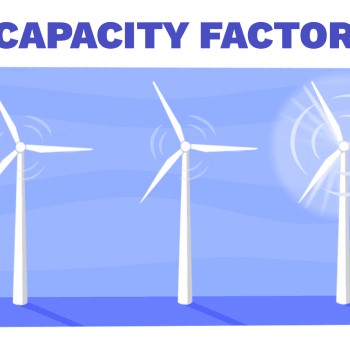 Wind turbines convert the kinetic energy in moving air into rotational energy, which in turn is converted to ...
Wind turbines convert the kinetic energy in moving air into rotational energy, which in turn is converted to ...
 Wind turbines convert the kinetic energy in moving air into rotational energy, which in turn is converted to ...
Wind turbines convert the kinetic energy in moving air into rotational energy, which in turn is converted to ...Basics of Wind Farms
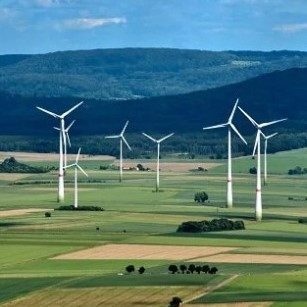 Throughout history, wind has been used to move grain mills or push the vessels that sailed the seas. However, it was not ...
Throughout history, wind has been used to move grain mills or push the vessels that sailed the seas. However, it was not ...
 Throughout history, wind has been used to move grain mills or push the vessels that sailed the seas. However, it was not ...
Throughout history, wind has been used to move grain mills or push the vessels that sailed the seas. However, it was not ...What is Wind Energy?
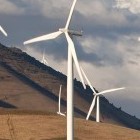 Wind is moving air. We can use the energy in wind to do work. Early Egyptians used the wind to sail ships on the Nile River. ...
Wind is moving air. We can use the energy in wind to do work. Early Egyptians used the wind to sail ships on the Nile River. ...
 Wind is moving air. We can use the energy in wind to do work. Early Egyptians used the wind to sail ships on the Nile River. ...
Wind is moving air. We can use the energy in wind to do work. Early Egyptians used the wind to sail ships on the Nile River. ...Wind Farm Siting, Installation and ...
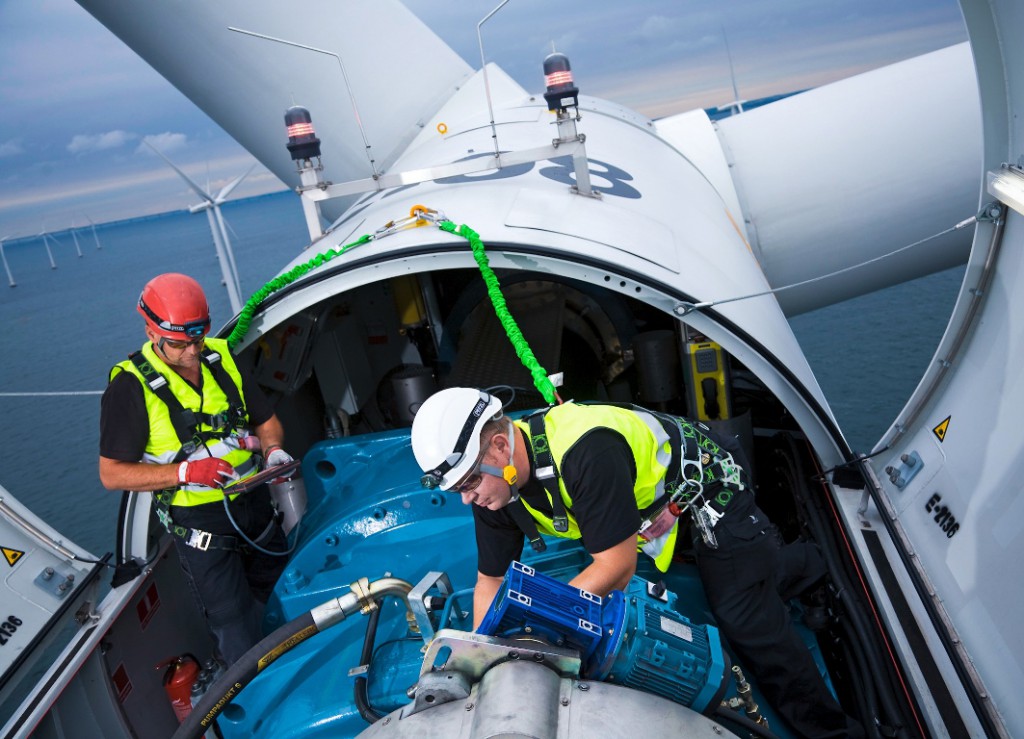 Before wind turbines can be installed, the most appropriate location or locations for them needs to be determined. The ...
Before wind turbines can be installed, the most appropriate location or locations for them needs to be determined. The ...
 Before wind turbines can be installed, the most appropriate location or locations for them needs to be determined. The ...
Before wind turbines can be installed, the most appropriate location or locations for them needs to be determined. The ...Basics of Wind Energy Production
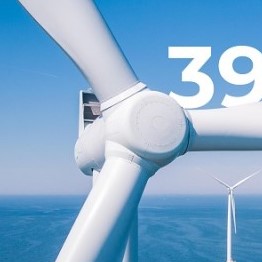 In the United States, most wind energy is commercially generated for delivery and sale on the grid. Wind projects vary in ...
In the United States, most wind energy is commercially generated for delivery and sale on the grid. Wind projects vary in ...
 In the United States, most wind energy is commercially generated for delivery and sale on the grid. Wind projects vary in ...
In the United States, most wind energy is commercially generated for delivery and sale on the grid. Wind projects vary in ...